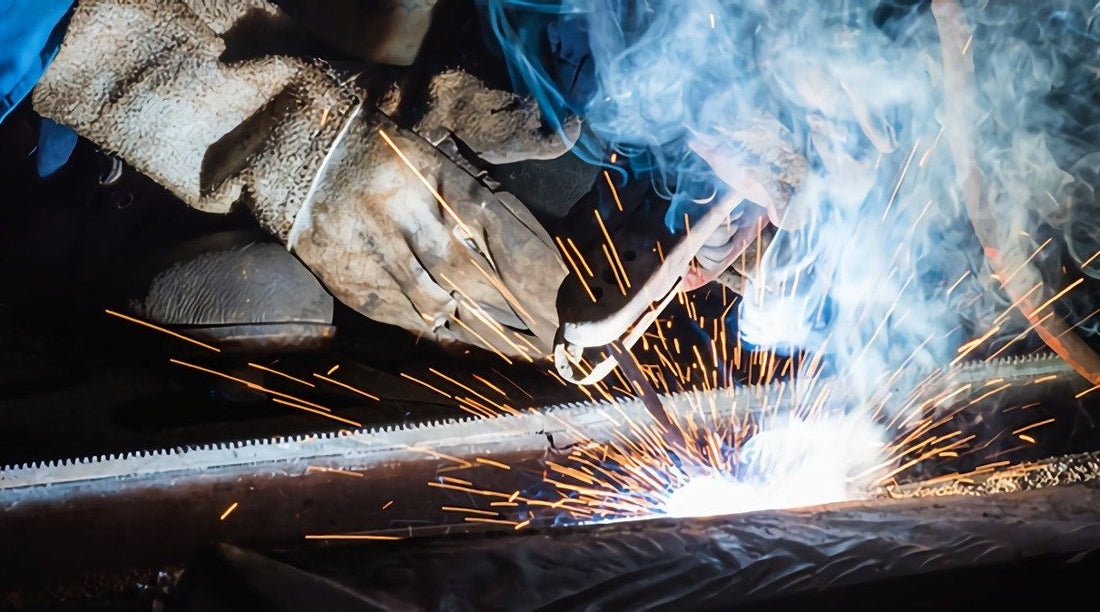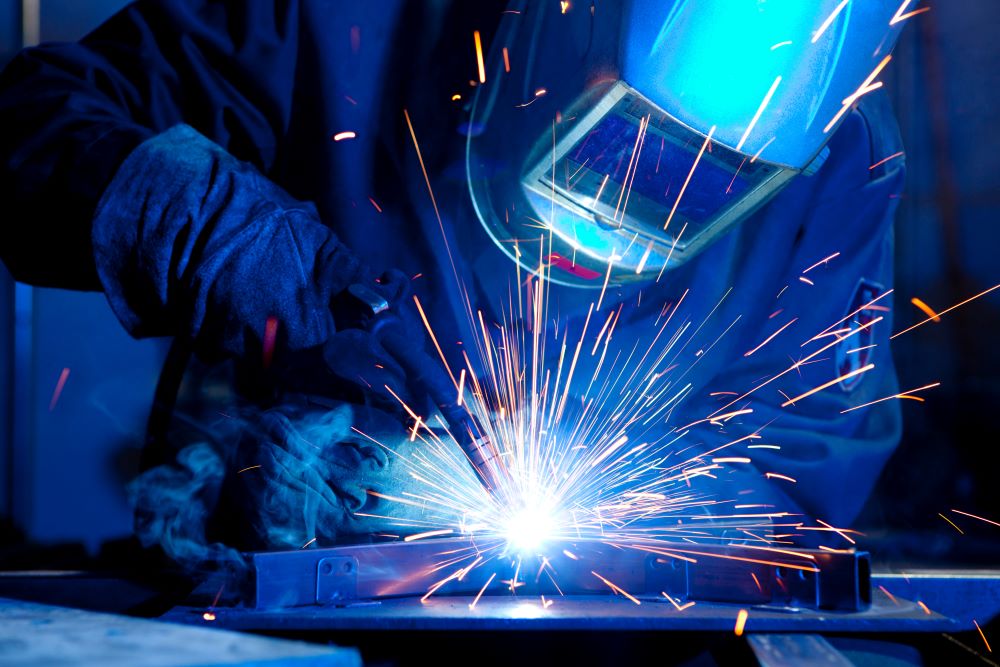All Concerning Welding: Secret Insights Into Techniques and Ideal Practices for Success
Welding includes a range of strategies, each matched for certain materials and applications. Understanding these techniques, such as GMAW, SMAW, and TIG, is essential for attaining excellent outcomes. In addition, the best tools and safety techniques can not be ignored. As prep work and fixing play important roles in the welding procedure, understanding these aspects can considerably enhance the top quality of the end product. What are the crucial elements that guarantee a successful weld?
Understanding Various Welding Strategies
Welding strategies encompass a selection of approaches, each matched to particular applications and products. Among the most usual methods are Gas Metal Arc Welding (GMAW), Protected Metal Arc Welding (SMAW), and Tungsten Inert Gas Welding (TIG) GMAW, likewise called MIG welding, is preferred for its speed and flexibility, making it optimal for slim products. SMAW, or stick welding, is preferred for its simplicity and efficiency in outdoor settings, especially with thicker metals. TIG welding provides accuracy and control, making it ideal for elaborate job and non-ferrous metals (Belgrade Fabrication). Each technique has its one-of-a-kind advantages and factors to consider, permitting welders to choose the very best approach based on the task's demands, product kind, and preferred results. Recognizing these strategies is essential for successful welding
Necessary Welding Equipment and Tools
While various welding methods call for particular skills, the appropriate devices and tools are just as necessary for attaining quality outcomes. Important welding equipment consists of welding equipments, which differ relying on the strategy-- such as MIG, TIG, or stick welding. Protective gear, consisting of gloves, aprons, and helmets, assurances safety and security and convenience throughout the procedure. In enhancement, fixtures and clamps aid secure materials in place, making certain precision in welds. Consumables like welding rods, wire, and shielding gas are also vital elements that influence the top quality of the weld. Moreover, tools such as mills and cutters assist in surface prep work and post-weld completing, adding to an expert end result. Buying high-quality equipment eventually enhances the effectiveness and effectiveness of welding jobs.
Security Practices in Welding
Correct security practices are essential in the welding industry to shield workers from possible threats. Welders need to wear ideal personal protective equipment (PPE), consisting of headgears with proper shading, handwear covers, and flame-resistant apparel. Appropriate air flow is important to reduce exposure to harmful fumes and gases generated during the welding process. In addition, employees should be trained in the correct handling of welding devices to avoid mishaps. Fire safety measures, such as keeping flammable products far from the welding location and having fire extinguishers readily offered, are necessary. Regular assessments of devices and work spaces can aid identify possible hazards prior to they bring about accidents. By adhering to these safety and security techniques, welders can create a safer working setting and decrease risks connected with their profession.
Preparing Products for Welding
Preparing materials for welding is a vital action that considerably affects the high quality and integrity of the end product (Montana Mobile Welding and Repair Welding). Correct prep work involves cleaning up the surface areas to eliminate contaminants such as corrosion, oil, and dust, which can jeopardize the weld. Techniques such as grinding, sanding, or using solvents are typically employed to attain a clean surface area. Additionally, guaranteeing that the materials fit together snugly is vital; spaces can lead to weak welds. It's additionally crucial to take right into account the positioning and positioning of the components, as this will influence the simplicity of welding and the last end result. Selecting the proper filler material and ensuring compatibility with the base metals is crucial for attaining solid, sturdy welds.
Tips for Achieving High-Quality Welds
Accomplishing premium welds needs attention to information and adherence to finest practices throughout the welding process. Appropriate joint prep work is important, making certain surfaces are clean and complimentary from pollutants. Picking the proper filler product and welding method based upon the base metals is important for ideal bonding. Maintaining constant traveling rate and angle while welding can advertise and stop flaws harmony. Furthermore, managing heat industrial welding input is crucial; excessive warmth can result in warping and deteriorated joints. Consistently checking the welds throughout the process enables prompt changes if needed. Ultimately, utilizing proper post-weld treatments, such as cleansing and anxiety alleviation, can improve the longevity and honesty of the weld, eventually guaranteeing an effective end result.
Troubleshooting Typical Welding Issues
Welding frequently presents difficulties that can impact the quality and integrity of the end product. Typical problems such as porosity, irregular weld grains, and getting too hot can emerge, each needing details fixing strategies. Recognizing these issues is essential for welders to enhance their abilities and achieve ideal results.
Porosity Troubles Explained
Although porosity can commonly be overlooked, it stays a vital concern in welding that can compromise the integrity of an ended up product. Porosity refers to the visibility of small gas pockets within the weld bead, which can lead and damage the joint to early failing. This problem usually arises from contaminants, wetness, or incorrect shielding gas protection throughout the welding procedure. To reduce porosity, welders need to verify that the base materials are clean and dry, utilize ideal protecting gases, and preserve constant welding specifications. Frequently checking the tools and setting can additionally aid recognize potential problems before they show up in the weld. Attending to porosity effectively is necessary for attaining solid, long lasting welds that satisfy quality criteria.

Irregular Weld Beans
Irregular weld grains can considerably affect the quality and strength of an ended up item. Various factors add to this concern, including incorrect travel rate, wrong amperage setups, and inconsistent electrode angles. When the welder moves as well swiftly, a grain may appear narrow and lack penetration, while moving also slowly can create too much build-up. Additionally, making use of the wrong amperage can cause either undercutting or too much spatter, both of which compromise weld stability. The welder's strategy, such as irregular torch activity, can likewise cause irregular grain appearance. To reduce these troubles, welders should concentrate on keeping steady, controlled motions and ensuring appropriate equipment setups to attain harmony in their welds. Uniformity is company website crucial to accomplishing dependable and strong welds.
Overheating and Bending Issues
Too much warm during the welding procedure can lead to considerable overheating and buckling issues, influencing the architectural honesty of the workpiece. These problems usually materialize as distortion, which can endanger placement and fit-up, making additional setting up challenging. Factors adding to overheating consist of the choice of welding parameters, such as voltage and take a trip rate, in addition to the kind of product being bonded. To alleviate these concerns, welders must maintain regular traveling rate and proper warm input while keeping track of the workpiece temperature. Furthermore, preheating or post-weld heat treatment can aid reduce tensions created by fast air conditioning - Fabrication. Normal inspection and adherence to best techniques are important in preventing overheating and making certain the durability and reliability of bonded frameworks
Regularly Asked Concerns
What Are the Occupation Opportunities in the Welding Sector?
The welding sector offers varied job possibilities, including positions as welders, teachers, designers, and assessors. Professionals can function in manufacturing, building and construction, aerospace, and auto markets, profiting from solid demand and affordable wages in numerous duties.
Just How Can I Enhance My Welding Speed Without Sacrificing Quality?
To enhance welding rate without compromising top quality, one must practice effective methods, preserve tools, optimize settings, and improve hand-eye control. Normal training and seeking comments can also considerably add to accomplishing much faster, high-grade welds.
What Certifications Are Available for Welders?
Various accreditations exist for welders, consisting of those from the American Welding Society (AWS), the National Center for Building And Construction Education and Research Study (NCCER), and different industry-specific companies. These qualifications improve employability and demonstrate ability effectiveness.
Exactly How Does Welding Affect the Characteristics of Metals?
Welding influences the residential or commercial properties of metals by changing their microstructure, which can see post lead to adjustments in ductility, hardness, and toughness. Warm input and cooling rates throughout the procedure substantially impact these product features.
Can I Bonded Dissimilar Metals With Each Other?

Comments on “Early defect indicators and what Belgrade can do about them”